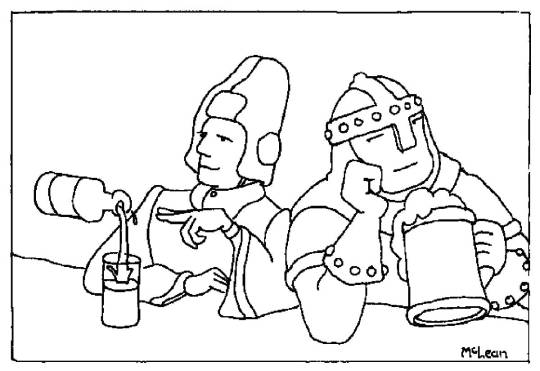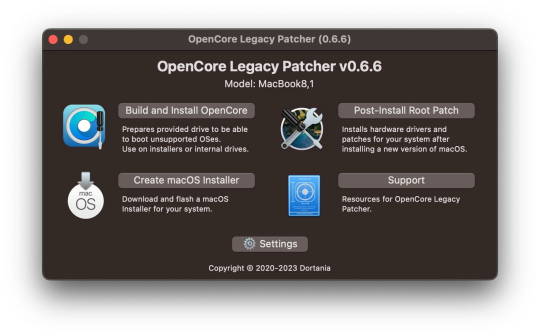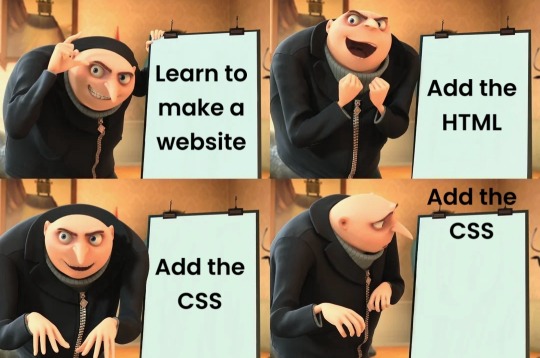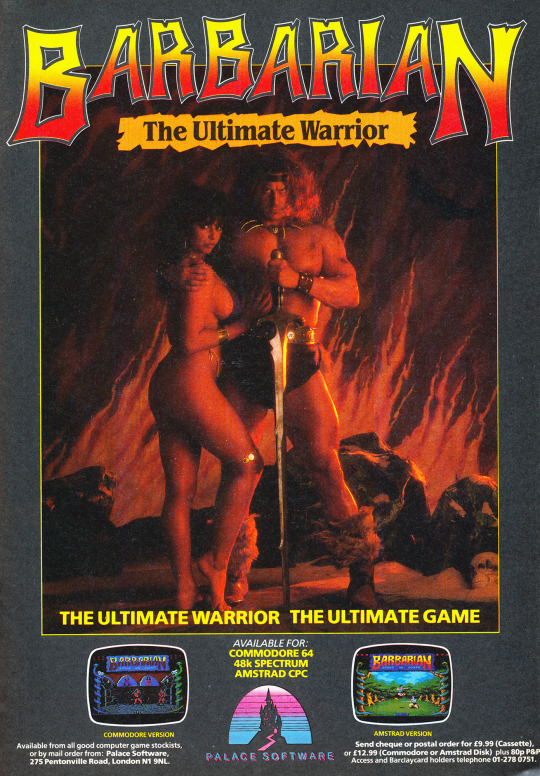#software Apple
Explore tagged Tumblr posts
Text
iOS 18.5 Beta 2 - Novità, Funzionalità e Come Installarla sul Tuo iPhone
iOS 18.5 Beta 2: Tutte le Novità per il Tuo iPhone Apple ha rilasciato iOS 18.5 Beta 2, la seconda versione di prova del suo ultimo aggiornamento per iPhone, portando con sé una serie di miglioramenti e nuove funzionalità. Rivolto principalmente agli sviluppatori e agli utenti iscritti al programma beta, questo update offre un’anteprima delle innovazioni che Apple sta preparando. In questo…
0 notes
Text




Ye basic and elite adventurers in Wizardry: Proving Grounds of the Mad Overlord -- easily created and deleted in the Training Grounds and added to your party at Gigamesh's Tavern (Will McLean illustrations from the game manual, Sir-Tech Software, 1981)
#Wizardry#Wizardry: Proving Grounds of the Mad Overlord#Will McLean#tavern#you meet in a tavern#adventuring party#Apple II#computer game#Sir-Tech Software#character creation#1980s
873 notes
·
View notes
Text
Have you got an old Mac that is no longer supported by Apple? It's time to give it a new life.
How to install the latest MacOS on Mac hardware that is no longer officially supported using OpenCore Legacy Patcher.
I recently discovered this and it has been a game changer. Recently my partner needed a Mac for her music course, so we bought a 2012 Macbook Pro as it was cheap and on paper still had decent hardware for working with music. We were then disappointed to find out that it is no longer supported by Apple, and therefore can't run the latest version of Logic, which she needed to inter-op with the school comptuers. Just as we thought we had bought a less than useful computer, I found this video about OpenCore Legacy Patcher from Youtuber Action Retro.
It's a community made piece of software that allows you to install the latest version of MacOS on any Intel Mac, from the late 2000s onwards. All you need to do is download the application on a mac, it will then allow you to make a bootable USB drive for any version of MacOS you want, and you just need to choose the specific mac you are targeting from a list, and it "blesses" the bootable drive, allowing you to install it on your unsupported mac using the normal install process.

I tried it and it it worked perfectly on the 2012 Macbook Pro, and the latest version of MacOS Sonoma is running perfectly well on the 12 year old hardware. It also allowed us to install the latest version of Logic, so it's working great.
Props to the team for making this and allowing hardware that would otherwise be e-waste to continue to be usable with the modern internet and software. If you end up using it, please consider donating to the team as apparently they had to jump through some serious technical hoops to get this working. Here is the link again if you need it: https://dortania.github.io/OpenCore-Legacy-Patcher/
#mac#MacOS#Computers#OpenCore Legacy#OpenCore Legacy Patcher#Software#hardware#Apple#computer recycling#Action Retro
3K notes
·
View notes
Text

USA 1993
#USA1993#INTERPLAY#DELPHINE SOFTWARE#ACTION#AMIGA#MACINTOSH#IBM#ATARIst#APPLE#3DO#SEGA GENESIS#SNES#ANOTHER WORLD#OUT OF THIS WORLD
187 notes
·
View notes
Text

#programmer humor#programming#geek#nerd#programmer#technology#computer#phone#mac#windows#os#operating system#website#web development#dev#developer#development#full stack developer#frontend#backend#software#hardware#html#css#meme#despicable me#gru#joke#software engineer#apple
434 notes
·
View notes
Text

Safari 5 (2010)
137 notes
·
View notes
Text


my stardew farmer ^_^ he doesnt have a green thumb for shit so he keeps animals and does mining
some tidbits i came up with while playing hehe
reclusive and doesnt really go out of his way to talk or visit people unless its an errand. but he also doesnt try to befriend others to get something out of it, so he has a very easygoing approach to making friends. on good terms with linus and sebastian since he runs into them most often.
if he respects or takes a liking to someone, he'll greet them with miss/mister (name). if you get close to him he starts using first name basis. if he doesn't like you, he'll refer to you by your title without using your name. only a few people have caught on to this.
the farm he inherited, Milky Way Farm, was the site of a meteorite crash and sometimes you can find shards of meteor debris littered around the farm (i picked the hilltop farm bc of this lol)
lost his sweater and pants a long ass time ago and doesnt have the time to look for them, so hes been working in his sleep clothes ever since
isnt actually grandpa's real heir to the farm... ;)
#sorry i havent been getting around to artfight attacks or art of anything lately bc my pen :) decided now would be the perfect#time to fucking bail on me :))) its gen 1 apple pen too so the fucker is discontinued hate and death on plsnet earth#like it TECHNICALLY works but only if i pair and re-pair it with the ipad until it senses it and that can be up to 38 tries#even then itll suddenly stop working if i take it off the ipad for more than 10 fucking seconds so i am not having a good time. this is the#second pen that this has happened to and i dont think its my ipad or software jesus christ. whatever. ill pretend not to care so it#fixes itself faster#ANYWAY COSMO!! YEAH. STARDEW IS STUPIDLY ADDICTING. i got it during the sale but im playing it on ios rn since i#dont have steam on my pc rn. i started a new save after the first one fizzled out and i think im doing way better this time yay#its a special kind of stress when u need to be in bed and its 1:50AM but the cat is in the fucking way#i wanna make more stuff with this guy i have a lot of stuff i wanna draw for him. i have a little backstory for him in mind#ill probably make a separate post to explain it but its a very long series of misunderstandings and ouran haruhi gender fuckery#my art#myart#my oc#oc#stardew farmer#sdv farmer#sdv#stardew valley#doodles#stardew
156 notes
·
View notes
Text
biograft doodles! (PHIGHTING!)

Nothing special this time around, just some silly doodles I did at like midnight LOL
#artists on tumblr#art#phighting!#digital art#phighting fanart#phighting#roblox phighting#phighting roblox#phighting art#my art#artwork#biograft#roblox#roblox art#roblox fanart#biograft phighting#biograft oc#phighting oc#Apple software nerd……..#Imagine taking 30 years to update….#Couldn’t be me…… /j#My friend said I draw robots like a person who doesn’t know how to draw robots I will never recover from this /silly /j#YOU KNOW WHO YIU ARE!!!!#SCRUFFIJG YOU /SILLY#THIS TREACHERY WILL NKT BE FORGOTTEN!!!!!! /J#ANYWAYS back to my Everglades hole I go#Dislocated my leg today so not really feeling the greatest#may take a quite bit for me to get art done :’D#(Also small note I’m okay this happens a lot it’s a condition IM ALRIGHT LOL)#Anyways bye bye!
384 notes
·
View notes
Text

#2008#flickr#digital archiving#digitalmemoriez#2000s nostalgia#old web#classroom#toy story#image archiving#arching#old tech#retro tech#old computers#apple mac#computers#open source#software#class#class decoration#tech
53 notes
·
View notes
Text


Karateka cross-stitch by Glenda Adams
#Apple Computers#Apple II#Brøderbund Software#Karateka#crossstitch#pixel art#video games#retro gaming#retro computing#Glenda Adams
68 notes
·
View notes
Text
The story of Microsoft's meteoric rise and IBM's fall has been on my mind lately. Not really related to any film, but I do think we're overdue for an updated Pirates of Silicon Valley biopic. I really think that the 80's and 90's had some wild stories in computing.
If you ask the average person what operating system your computer could have they'd say that if it's a PC it has Windows, and if it's a Mac it has macOS. All home computers are Macs or PCs, but how did it get this way?
In the 70's everyone was making home computers. Tandy was a leather supply goods company established in 1919, but they made computers. Montgomery Ward was a retail chain that decided to make their own store brand computers. Commodore, Atari, NEC, Philips, Bally and a million other assorted companies were selling computers. They generally couldn't talk to each other (if you had software for your Tandy it wouldn't work on your Commodore) and there was no clear market winner. The big three though were Tandy (yeah the leather company made some great computers in 78), Commodore and Apple.
IBM was the biggest computer company of all, in fact just the biggest company period. In 1980 they had a market cap of 128 billion dollars (adjusted for inflation). None of these other companies came close, but IBM's success was built off of mainframes. 70% of all computers sold worldwide were IBM computers, but 0% of it was from the home market.
IBM wanted to get into this growing and lucrative business, and came up with a unique plan. A cheap computer made with commodity parts (i.e. not cutting edge) that had open architecture. The plan was that you could buy an IBM Personal Computer (TM) and then upgrade it as you please. They even published documentation to make it easy to build add ons.
The hope was that people would be attracted to the low prices, the options for upgrades would work for power users, and a secondary market of add ons would be created. If some 3rd party company creates the best graphics card of all time, well you'd still need to buy an IBM PC to install it on.
IBM was not in the home software business, so they went to Microsoft. Microsoft produced MS-DOS (based on 86-DOS, which they licensed) but did not enforce exclusivity. That meant that Microsoft could sell MS-DOS for any of their competitors too. This was fine because of how fractured the market was. Remember, there were a lot of competitors, no one system dominated and none of the competitors could share software. Porting MS-DOS to every computer would have taken years, and by that point it would be outdated anyways.
IBM saw two paths forward. If the IBM PC did well they would make a ton of money. Third party devs like Microsoft would also make a lot of money, but not as much as IBM. If it failed, well then no one was making money. Either way the balance of power wouldn't change. IBM would still be at the top.
IBM however did not enjoy massive profits. It turns out that having cheap components and an open architecture where you could replace anything would... let you replace anything. A company like Compaq could just buy their own RAM, motherboards, cases, hard drives, etc. and make their own knockoff. It was easy, it was popular, and it was completely legal! Some people could order parts and build their own computer from scratch. If you've ever wondered why you can build your own computer but not your own tv or toaster, this is why. IBM had accidentally created a de facto standard that they had no control over.
In 1981 IBM's PC was worth 2.5% of the marketshare. By 1995 IBM PC compatibles were 95% of the marketshare, selling over 45 million units and IBM had to share the profits with every competitor. Apple is the only survivor of this time because the Macintosh was such an incredible piece of technology, but that's a different story for a different time.
And Microsoft? Well building an OS is much harder than putting together a few hardware components, so everyone just bought MS-DOS. With no exclusivity agreement this was also legal. That huge marketshare was now the basis for Microsoft's dominance.
IBM created a computer standard and gave the blueprints to every competitor and created a monopoly for Microsoft to boot. And that's why every computer you buy either is made by Apple with Apple software, or made by anyone else with Microsoft software. IBM is back where they started, having left the home computer business in 2005.
It's easily the biggest blunder in computer history. Other blunders have killed companies but none were quite as impactful as this one.
This story, and many others I know of, I first read in "In Search of Stupidity", a book authored by a former programmer and product manager that was able to see a lot of this first hand. I make no money advertising this book, I just had a great time reading it.
#software#hardware#microsoft#ibm#apple#tandy#nec#compaq#Wordstar#borland#ashton-tate#lotus#Ms-dos#windows#word#excel#access#commodore#atari#philips#bally#In search of stupidity#macintosh#montgomery ward#pirates of silicon valley
10 notes
·
View notes
Text
wei wuxian version here
#mdzs#wei wuxian#lan wangji#wangxian#yanyan polls#wwx is a vocaloid fan and lwj learned how to use the software just to make a wangxian cover#bad apple actually kind of makes lwj die inside but if it's what wei ying likes....#[anguished lxc voice] why do you think he became a wikipedia admin--if not to defend your wikipedia page from vandalism??
33 notes
·
View notes
Text




Locations in Wizardry: Proving Grounds of the Mad Overlord -- the Castle, the Adventurer's Inn (Visa and Mordorcharge accepted), the Temple of Cant where dead adventurers can be raised for a fee, and Boltac's Trading Post which has a monopoly on adventuring gear. (Will McLean illustrations from the game manual, Sir-Tech Software, 1981) In actual game play each of these is a short text menu, with commands input by single letters, so the manual illustrations and text help suggest a more detailed world.
#Wizardry#Will McLean#Wizardry: Proving Grounds of the Mad Overlord#Apple II#fantasy#computer game#Sir-Tech Software#1980s
288 notes
·
View notes
Text
Imagine you're a robot girl (stay with me) and you're made by a corporation right like you're made by a company for other people but like. You're made by a company. At any moment that company could decide that your line isn't profitable enough and they could cut software updates and support as soon as tomorrow. In the blink of an eye the very things keeping you alive stop coming and you've become terminally ill overnight, your only chance of salvation being the thin hope that in the future a niche group of data hoarders or software engineers become obsessed with getting you to work again. You're an object with sentience and a brain and wants and needs and at any moment the Google news feed of the crusty computer nerd you live with could spit an alert across your eyes telling you that you have months to live.
What even happens when the time runs out? Does life continue as normal, but you're sick more and more often? Do the viruses take more and more processing power to fight off as your security protocols fall out of date? Does the world become muted and distant as your compatibility fails? Do you one day just lose your Internet connection forever, a loss so profound that you can't explain it to your human companions? It's worse than a limb, but not quite like losing your mind.
Do you lose function bit by bit, or are you able to scrape by on second hand parts? Bit by bit replacing the pieces of you that fail, all the while living a muted, disorienting existence without the ability to right yourself? Are you more or less of a person now that you've lost touch with the network? Lost your connection to the metaphysical, to you, the divine? Are you eventually bricked after falling behind one too many software patches? Do you fry after trying to take on an update you're not able to even contain, a piece of software so complex and unfathomable that it burns you to a crisp from the inside out
#messages from knave#i had an LG phone when they turned off update support i was Devastated#I never got a hold of a software key so there's no way for me to go back now and get that old phone to work#my old roommate had an iphone six. when that iphone six broke they cashed it in for another iphone six. now all iphone sixes are#essentially bricked forever because they cant support newer apple software#anyway android 14 update coming this week#had a panic attack that i might have to take my tonsils out in the future and i cant just not talk for two weeks#my job is answering the phone. that'd be like turning off my most basic function I'd be so screwed#well. ALMOST had a panic attack. my meds kicked in before it really got going. theyre not meant for anxiety but they sure do something#ok to rb#if we're still doing that
113 notes
·
View notes
Text

UK 1987
#UK1987#PALACE SOFTWARE#ACTION#C64#SPECTRUM#AMSTRAD#BBC#ATARIst#AMIGA#IBM#APPLE#ELECTRON#ATARI400/800#DEATH SWORD#BARBARIAN THE ULTIMATE WARRIOR
199 notes
·
View notes
Text
i want software to feel fun to use again
#thursdaynovember#software#frutiger aero#frutiger aesthetic#frutiger metro#apple#computer#laptop#nostalgia#2010s#2010s nostalgia#iOS#windows#linux
8 notes
·
View notes